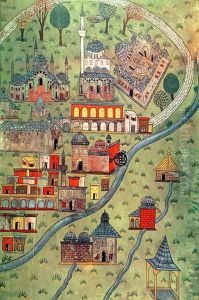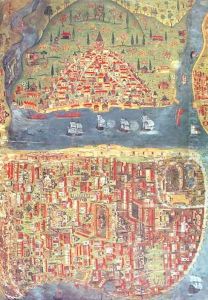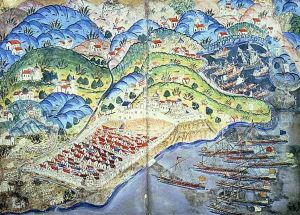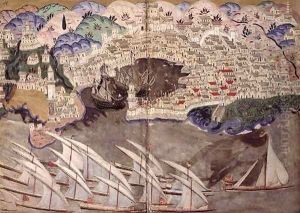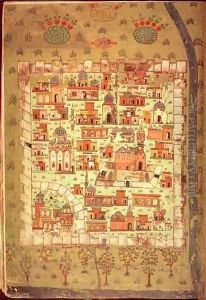Nasuh Al-Silahi Paintings
Nasuh Al-Silahi, also known as Matrakçı Nasuh for his proficiency in the game of matrak, a form of traditional Turkish swordplay, was a 16th-century Ottoman polymath who made significant contributions in various fields such as mathematics, cartography, historiography, and military science. Born in 1480 in Bosnia, then part of the Ottoman Empire, Nasuh was educated in the Enderun school in Istanbul, an institution dedicated to training high-ranking officials and scholars for the Ottoman state. His diverse talents and comprehensive education allowed him to excel in many disciplines, making him a quintessential example of a Renaissance man in the Ottoman context.
Nasuh Al-Silahi's contributions to cartography and miniature painting are among his most celebrated achievements. His detailed cityscapes and panoramic views of the cities and landscapes of the Ottoman Empire, as seen in his work 'Süleymanname', a chronicle of Sultan Suleiman the Magnificent's reign, provide invaluable insights into the urban and rural settings of the 16th century Ottoman world. These works are noted for their accuracy, attention to detail, and artistic merit, distinguishing Nasuh as a pioneering figure in the development of Ottoman cartography and miniature painting.
In addition to his artistic prowess, Nasuh was also a noted mathematician and educator, authoring several works on mathematics and military science. His mathematical treatises aimed at simplifying complex mathematical concepts for students, while his military manuals provided practical advice on the use of firearms and other aspects of contemporary warfare, reflecting the changing nature of military engagements during his lifetime.
Nasuh Al-Silahi's diverse body of work and contributions to different fields highlight the intellectual vibrancy of the Ottoman Empire during its apex. His legacy is preserved in numerous manuscripts and works that continue to be studied for their historical and artistic value. Nasuh's death in 1574 marked the end of an illustrious career that spanned nearly a century, leaving behind a rich legacy that bridges the worlds of art, science, and military strategy.
